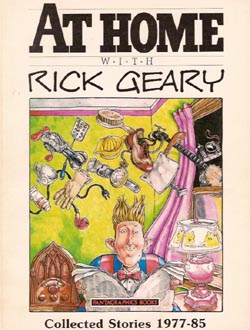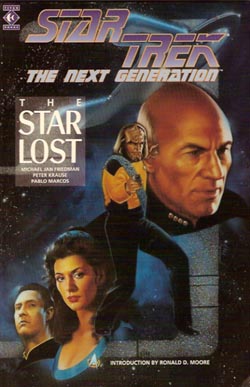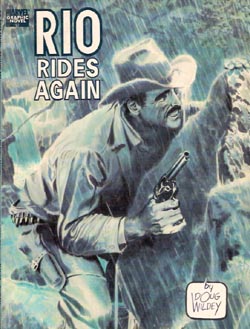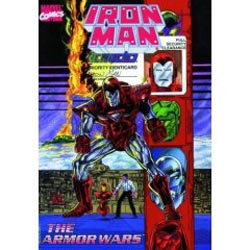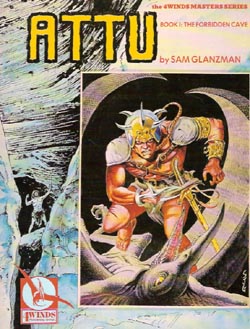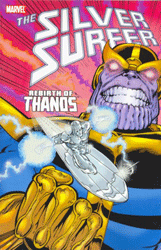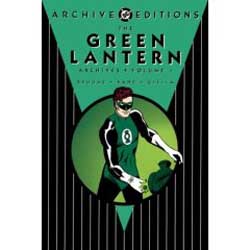
By John Broome, Gil Kane & various (DC Comics)
ISBN: 1-56389-087-9
After the successful revival and reworking of The Flash, DC (or National Comics as they then were) was hot to capitalise on the resurgent superhero trend. Showcase #22 (September-October 1959) hit the stands at the same time as the fourth issue of the new Flash (#108) and once again the guiding lights were Editor Julie Schwartz and writer John Broome.
The Space Age reworking of the Golden-Age superhero with the magic ring replaced mysticism with super-science. Hal Jordan was a young test pilot in California when an alien policeman crashed on Earth. Mortally wounded, Abin Sur commanded his ring, a device which could materialise thoughts, to seek out a replacement ring-bearer, honest and without fear. Scanning the planet it selected Jordan and brought him to the crash-site. The dying alien bequeathed his ring, the lantern-shaped Battery of Power and his profession to the astonished Earthman.
In six pages ‘S.O.S Green Lantern’ establishes the characters, scenario and narrative thrust of a series that would increasingly become the spine of DC continuity, leaving room for another two adventures in that premiere issue. ‘Secret of the Flaming Spear!’ and ‘Menace of the Runaway Missile!’ were both contemporary thrillers set against the backdrop of the aviation industry at a time when the Cold War was at its height.
Unlike the debut of The Flash, the editors were now confident of their material. The next two issues of Showcase carried the new hero into even greater exploits. ‘Summons from Space’ sends Green Lantern to another world: Saving an emerging race from a deadly threat at the behest of the as-yet-unknown leaders of the Green Lantern Corps, whilst ‘The Invisible Destroyer’ pits the Emerald Gladiator against the earthbound but eerie menace of a psychic marauder.
Showcase #24 (January-February, 1960) featured another spy-ring in ‘The Secret of the Black Museum!’ but Hal Jordan’s complex social life took centre-stage in ‘The Creature That Couldn’t Die!’ when the threat of an unstoppable monster pales before the insufferable stress of being his own rival. Hal’s boss Carol Ferris, left in charge of the aviation company by her father (a radical concept in 1960) won’t date an employee but is happy for him to set her up with the glamorous, mysterious Green Lantern.
Six months later Green Lantern #1 was released. All previous tales had been dynamically drawn by Gil Kane and inked by Joe Giella, in a visually arresting and exciting manner, but the lead tale here, ‘Planet of Doomed Men’ was inked by the uniquely gifted Murphy Anderson, and his fine line-work elevated the tale (of more emergent humans rescued from another monster) to the status of a minor classic. Joe Giella returned for the second tale, ‘Menace of the Giant Puppet!’, in which Green Lantern fights his first – albeit rather lame – super-villain, the Puppet Master.
The next issue originated a concept that would be pivotal to the future of DC continuity. ‘The Secret of the Golden Thunderbolts!’ featured the Antimatter Universe and the diabolical Weaponers of Qward, a twisted race who worshipped Evil, and whose “criminals†(i.e. people who wouldn’t lie, cheat, steal or kill) wanted asylum on Earth. This lead tale was also inked by Anderson, and is an early highpoint of tragic melodrama from an era where emotionalism was actively downplayed in comics. ‘Riddle of the Frozen Ghost Town!’ is a crime thriller that highlights the developing relationship between the hero and his Inuit (then “Eskimoâ€) mechanic ‘Pieface’.
The Qwardians returned in the next issue’s ‘The Amazing Theft of the Power Lamp!’ and Jordan’s love-life again spun out of control in ‘The Leap Year Menace!’, whilst GL#4 saw the hero trapped in the antimatter universe in ‘The Diabolical Missile from Qward!’ which is nicely balanced by the light and frothy mistaken-identity caper ‘Secret of Green Lantern’s Mask!’ (this last apparently crafted by a veritable raft of pencillers including Kane, Giella, Carmine Infantino, Mike Sekowsky and Ross Andru).
The last story in this volume is the full length thriller which introduced Hector Hammond, GL’s second official super-villain in ‘The Power Ring that Vanished!’ a saga of romantic intrigue and evolution gone wild.
These highly enjoyable traditional costumed romps are in themselves a great read, but when considered as the building blocks of all DC continuity they become vital fare for any fan keen to make sense of the modern superhero experience.
© 1959-1961, 1993, 2007 DC Comics. All Rights Reserved.
